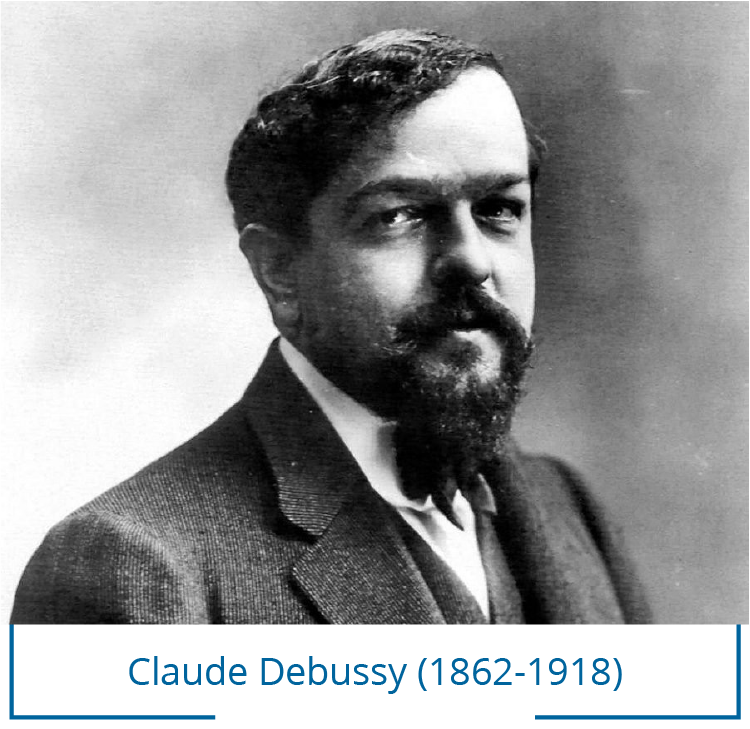SYRINX
Claude Debussy
(b. St Germain-en-Laye, France, August 22, 1862; d. Paris, March 25, 1918)
Composed 1913; 3 minutes

Debussy’s tautly written, 35-measure, three-minute Syrinx is a seminal work which led to more than a century of probing, exploratory works for solo flute. In a similar way, his Prélude à l’après-midi d’un faune marked the turning point from a 19th century outlook on music to a 20th century aesthetic. Syrinx, originally titled La flûte de Pan, first served as incidental music, played off-stage, in Gabriel Mourey’s symbolist play, Psyché (1913). The Act 3 stage directions for this melodrama within the play describe a moonlit, lakeside scene where nymphs, adorned in white, dance and lounge, admiring themselves, listening “to the syrinx [panpipe] of the invisible Pan, moved by the song that escapes from the hollow reeds.”
In the piece, downward cascading, curling melodic fragments that turn in on themselves, without any anchoring tonality, luxuriate in the warm lower register of the Boehm flute. The three sections of Syrinx are tonally ambiguous, often modal, elusive yet hauntingly familiar and seductive. “These are harmonies that are not in our books,” wrote Debussy to the music critic (aka Monsieur Croche), imagining notes played by an Egyptian shepherd on his flute. The seductive power of the syrinx recurs throughout Debussy’s music, above all in the Prélude à l’après-midi d’un faune.
